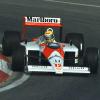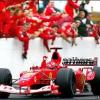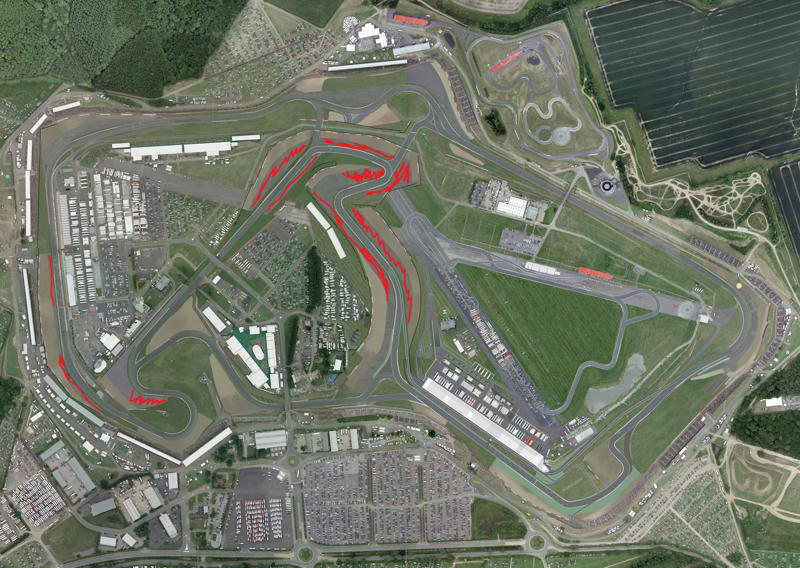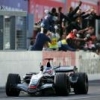Are the cars too safe? This is an exceptionally difficult question to answer. My take on it essentially comes down to this: if you make the cars safe enough, then the tracks don't need to be safe too. Formula 1 has raced at some truly dangerous places but if you are brave enough to scan Wikipedia's list of drivers who bought the farm while racing, it is rare to find any accident where the track was solely to blame, and even rarer to find an accident where the cars themselves weren't the main issue. It wasn't Zandvoort's fault the March 731 had a roll bar the size of a piece of macaroni. It wasn't Rouen-les-Essarts' fault Honda made a car out of magnesium. From time to time of course, the tracks themselves caught hell and rightly so. Watkins Glen being entirely covered in baby blue swords for ARMCO rarely did anyone any good. F1 cars in the 60s and 70s were distinct and loud and crazy but when you're a professional racing driver and it is legitimately a safer move not to wear seatbelts, you cannot pretend to have a particularly safe car to drive. Imagine a gokart Ford Pinto with a quarter of the weight and four times the horsepower. And it only has back seats. You might as well fill the fire extinguishers with barbecue sauce.
What sounds like a more dangerous endeavour: 1973 cars racing on 2013 tracks, or 2013 cars racing on 1973 tracks? Yeah, I'm leaning towards the first option as well. But if the sport had a similar injury rate today as it did in years gone by, the effect is hard to predict. To use the OP's example, if Paul di Resta was racing in the 70s then there would either be a very cautious Paul di Resta or there would be no Paul di Resta anymore. The safety of the modern sport is an endless Catch 22. By ensuring you are so well protected you can race until you're 50, you take away a lot of the rush that made you want to race until you're 50 in the first place. When the end result 99 times out of 100 of a crash is everyone walks away unhurt, then you could argue that 99 times out of 100 forcing another driver off the track isn't putting his life in danger. It's just an unfortunate byproduct of safety: racing has never ever ever been as safe as it is now, and if you can trust your life to your machinery, so can your opponent. It's not surprising a lack of respect for fellow drivers is an issue these days. No one snowflake feels responsible for the avalanche.
I think something that desperately needs to be kept in sight in these kinds of discussions is that something happening once doesn't necessarily mean sweet **** all. Once is nothing, twice is a coincidence, but three times is a pattern. That isn't to say you can't learn before it becomes a pattern, but it does mean that any kneejerk reactions over something unfortunate happening once are almost inevitably wrong. When the wheel off Webber's Red Bull hit the photographer, it was one of several times we've seen cars lose wheels leaving the pits in the last few seasons, and rightfully something was done about it. But imagine if after Rosberg's wing failure last weekend, the FIA immediately wrote legislation that all wings had to be held in place by dozens of screws, based off one incident which could have had dozens of explanations. That would be the wrong way to go about it, because even if you did solve a freak accident you could potentially open up a whole new set of issues. As I've said in other threads, every safety improvement has had unintended consequences. Half the drivers in the 60s were killed when their cars left the track and wound up hundreds of feet away from the circuit. The drivers campaigned for ARMCO barriers to be installed at all tracks. Then half the deaths in the next decade happened almost entirely because of the ARMCO the drivers themselves refused to race without. If Francois Cevert had crashed where he did 5 years earlier in the wild and dangerous 1960s era of F1, for all we know he could be hanging around the paddock with Niki Lauda right now. He might've had a limp, but he might have been alive. And we see this is all sports: rugby has far less concussions than the NFL, where the players feel they can take bigger risks thanks to their helmets and gear. Fun fact: deaths in boxing were extremely rare right up until boxing gloves were mandated. Fighters who aimed for the head often smashed every bone between elbow and finger tips, and learned it was in their best interest not to attack their opponent's head. When everyone had to wear gloves, no broken wrists, punches to the head only hurt the guy getting punched, and boxing became ten times as dangerous as it was before the "safety improvement". When caution is required, the cautious people stay safe. When it takes a one-in-a-million shot to kill you, you're inevitably going to be more than happy to gamble your opponent's safety by forcing him off the track. It's a one-in-a-million shot for him too, after all. A grid penalty at the next races and an angry email from the guy you punted will suck a bit, but it's not like the 70s where for the same action, you might have ended up going to a funeral. One in a million times, someone will have to pay for your gamble, and it might not be you.
I think that while it's probably correct to say that guys like Grosjean and Maldonado wouldn't survive long if magically transported back to a mid-60s F1 grid, the more fair answer is that guys like that would have learned a lot earlier than they did to smarten up. It makes me far more uneasy to think what a world of hurt F1 is going to be in if the next death is a result of one driver doing something blatantly dangerous and someone else paying the price for it. And there will be a next one: Senna won't be the last name on that list forever. NASCAR is playing with fire by allowing drivers to wreck each other and doing very little to stop it, and one day the fence isn't going to be able to stop a 3500lb stock car going 180mph from going into the stands. IndyCar seems to be on the right course with the new chassis but IndyCar is a discipline of racing that can only ever be so safe. F1 is a different animal. Too safe is better than not safe enough, but not by much.
Edited by Andrew Hope, 09 October 2013 - 00:22.


































